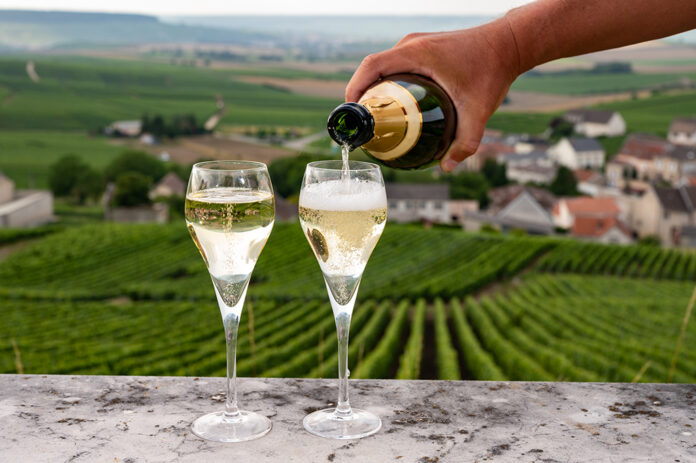Demand for LVMH’s Champagne brands is moderating this year after the boom that followed Covid-19 lockdowns, according to a top executive at the luxury conglomerate.
There was a “general sense of revenge pleasure,” in 2021 and 2022 after consumers were stuck at home, Moët Hennessy Chief Executive Officer Philippe Schaus said in an interview. The drinks and wines division he oversees generated about 7.5% of first-half revenue at parent company LVMH Moët Hennessy Louis Vuitton SE.
“2023 is a bit more complicated, because this effect of Covid is fading out, and there’s a lot of inflation in all countries,” Schaus said. “So we see that we are going back to normal.”
Schaus pointed to a drop in Champagne consumption at home. But other markets are holding up well.
“We have seen this summer that there was no abating of the demand for high-end Champagne” in beach and nightclubs across the Greek island of Mykonos and the Italian Riviera, as well as top restaurants in Paris, Schaus said. The division’s brands include Dom Pérignon, whose Plénitude 2 vintage 2004 bottle costs €495 ($528) in France.
Organic sales at the drinks unit fell 3% in the first half, hurt by a slowdown in Cognac consumption in the U.S.
LVMH’s wines and spirits division has been acquisitive in the recent past, with deals including an investment in the pricey Champagne label Armand de Brignac, co-owned with rapper Jay-Z. Earlier this year, LVMH bought a majority stake in rosé wine maker Château Minuty.
Schaus said LVMH isn’t looking at buying more alcohol brands, describing its portfolio as strong. But the executive expects more consolidation in the Champagne region.
“There are about 300 Champagne maisons so I can imagine that there will be mergers, for sure, because 300 is a lot,” he said. “It’s super fragmented.”
The Luxembourg-born executive spoke at Château de Saran, which is surrounded by vineyards belonging to Moët & Chandon near the town of Epernay in northern France. The interview took place during the harvesting period, known as les vendanges.
Schaus said volumes are plentiful. Rising temperatures have made yields more erratic, but the industry has been resourceful and has adapted to climate change over the past few centuries, Schaus said. “Champagne will continue to evolve. But I promise you, in 100 years, people will still be doing Dom Pérignon and Moët & Chandon.”
LVMH is the biggest maker of Champagne since it also owns the Krug, Ruinart, Veuve Clicquot and Mercier labels.
Comité Champagne, the industry trade group, in July said it expects its producers to ship 314 million bottles this year, down 3.7% from last year.
This article was provided by Bloomberg News.


